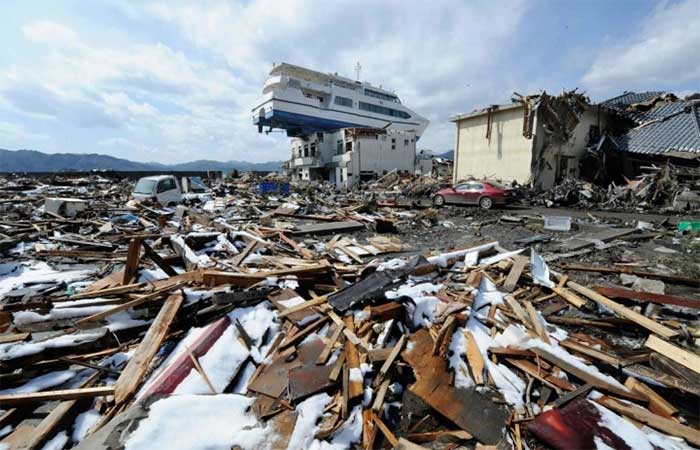Before the devastating earthquake that struck Turkey and Syria, resulting in over 4,300 deaths, the world had already witnessed other horrific disasters in the 21st century.
On February 7, the death toll from the earthquake in Turkey and Syria rose to over 3,700, with more than 16,000 injured. Turkish President Recep Tayyip Erdogan described this as the most destructive earthquake the country has experienced since 1999. The disaster in both nations could become one of the most horrific earthquakes in history.
Below are five of the most catastrophic earthquakes the world has faced in the 21st century:
2004: The Indian Ocean Double Disaster
In the early 2000s, the world witnessed a series of catastrophic earthquakes. In December 2004, a powerful earthquake measuring 9.3 on the Richter scale, the third strongest ever recorded (since seismic data collection began in 1900), struck off the western coast of Indonesia.
The earthquake triggered a massive tsunami, reaching heights of 30 meters, which devastated communities along the Indian Ocean coastline, killing a total of 227,898 people across 14 countries, making it the deadliest natural disaster recorded in history.
In addition to the high death toll, this disaster destroyed vast amounts of infrastructure and disrupted economic activities throughout coastal regions, such as Aceh in Indonesia and Tamil Nadu in India.
The earthquake was so powerful that it even caused minor tremors as far away as Alaska.

Aftermath of the 2004 tsunami. (Source: Insider)
2010: The Caribbean Disaster
In January 2010, a 7.0 magnitude earthquake struck the Caribbean nation of Haiti. The epicenter was near the town of Leogane, just 25 km from the capital, Port-au-Prince.
The aftershocks from the earthquake continued for nearly two weeks, including at least 52 tremors measuring 4.5 and above on the Richter scale.
The disaster affected about 3 million people. The Haitian government reported that the earthquake claimed approximately 220,000 lives. Around 250,000 homes and 30,000 buildings were destroyed, while Port-au-Prince and several other cities suffered extensive damage.
2011: The Pacific Double Disaster
In March 2011, a super-strong earthquake of 9.1 magnitude occurred beneath the Pacific Ocean, about 72 km east of Japan. This was the second strongest earthquake of the 21st century and the fourth strongest ever recorded.
The earthquake resulted in the deaths of over 19,700 people and displaced hundreds of thousands. A tsunami triggered by the earthquake led to the Fukushima nuclear power plant disaster, described as the worst nuclear disaster since the Chernobyl incident in 1986.
Three of the reactors at the Japanese nuclear facility melted down, resulting in the release of radioactive water into the surrounding area.
According to the World Bank, the economic damage from this event was estimated at $235 billion, making it the costliest disaster in history.

A boat swept onto the roof of a two-story house in Iwate by the tsunami. (Photo: JIJI)
2008: The Sichuan Earthquake
In May 2008, a powerful earthquake struck Sichuan Province in Southwest China. With a magnitude of 8.0 on the Richter scale, the earthquake caused the largest number of geological aftershocks ever recorded, including around 200,000 landslides. It was felt as far away as Beijing and Shanghai, as well as in Thailand and Vietnam.
The disaster claimed the lives of over 80,000 people and left nearly 5 million homeless, making it the deadliest earthquake in China since 1976.
2005: The Kashmir Earthquake
In October 2005, a 7.6 magnitude earthquake struck the western part of the Kashmir region, which is administered by Pakistan, as well as some areas of Jammu and Kashmir under Indian control. The disaster resulted in the deaths of 86,000 people and left many injured, while millions were displaced. This disaster is regarded as the deadliest earthquake in South Asia in the 21st century.


















































